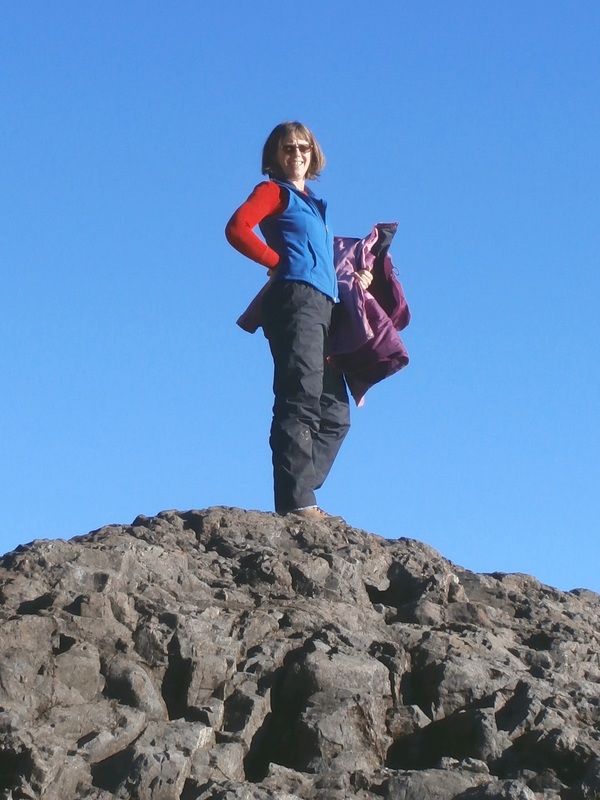|
A reflection on John 11:1-45 for St. David of Wales Episcopal Church, March 26, 2023 I have a clergy friend, Chris Hoke, whom I met in grad school when we were both earning our MFAs in Creative Writing. Chris is a pastor to gang members and his ministry began by corresponding with and visiting incarcerated gang members in Skagit County where he lives. As a result of the relationships he formed, he saw profound transformation when the men left jail and were given the opportunity to learn job skills at ministry supported Underground Coffee and leave behind gang life with continued relational support. His non-profit, Underground Ministries, has grown in the past decade and now is focused on growing the One Parish One Prisoner program, centered around the story of Lazarus as a metaphor for our prison system that entombs by incarceration. A system that often imprisons without trial, that sees people as disposable, and sentences them to live in cages nearly as lifeless as a tomb. Mass incarceration impacts our entire society, especially those whose loved ones are locked up, who grieve and mourn physical absence and the difficulty of maintaining relationships in such circumstances. One parish one prisoner is beautiful work of reconciliation and unification, where a single local church begins a relationship with a single incarcerated person and is in contact with them during their sentence and after their release.
Underground Ministries calls their work the Lazarus Project and draws parallels between Jesus involving the community in the unbinding of Lazarus, to the process of entering relationships with those imprisoned today. Underground Ministries offers this prayer as churches and individuals consider how Jesus calls them to unbind others: God of the Resurrection, you are not afraid of the tombs. But your disciples often are. Call us closer to you this season, Jesus, to know your heartbreak for your friends in the tombs. Clothe us with your courage and love to defy the gates of Hades, the barriers of death, that you said would not stop your church. Forgive us for helping construct more of those barriers in our society, out of our fear. May we find our liberation together with those we welcome out of bondage. Holy Spirit, guide us to truly, here in our community, “look for the resurrection of the dead and the life of the world to come. Amen.” This is the way I have found the Lazarus story most often presented, focused on the communal aspect of unbinding: on releasing those who are suffering, those who are without homes, those who suffer from addiction, or mental illness, those who have been abused, those who are cut off from abundant living in the myriad of ways in which human systems have failed us. The unbinding of Lazarus offers hope for freedom, release, and new life. Poet and Pastor Jan Richardson has this to say about the unbinding of Lazarus: “This is not just Almighty Jesus at the height of his powers, showing off what he is capable of; this is Jesus reaching into the depths of who he is, pouring himself out on behalf of those with whom he is most intimately in relationship. Jesus enacts Lazarus’ raising, but he does so in the context of a community. Jesus calls Lazarus forth, but he calls upon those around Lazarus—sisters, kinfolk, neighbors—to unbind him and let him go.” In LAZARUS BLESSING, a poem in her book Circle of Grace: A Book of Blessings for the Seasons, Rev. Richardson poetically highlights the freedom we can experience when we work to release ourselves from our bindings: The secret of this blessing is that it is written on the back of what binds you. To read this blessing, you must take hold of the end of what confines you, must begin to tug at the edge of what wraps you round. It may take long and long for its length to fall away, for the words of this blessing to unwind in folds about your feet. By then you will no longer need them. By then this blessing will have pressed itself into your waking flesh, will have passed into your bones, will have traveled every vein until it comes to rest inside the chambers of your heart that beats to the rhythm of benediction and the cadence of release. So, yes to the work of unbinding others from that which entombs them. And, yes to the work of freeing ourselves from that which binds us. And yet, what about the parts of this story that come before? What are we to make of Jesus’ unwillingness to come when dear friends beg for his presence? Personally, I haven't found a satisfactory answer in any of the commentaries I've read. It seems strange to me that Jesus, who tells Satan that it's not a good idea to tempt God, seems to be doing something akin to that. But what do I know? What do any of us know about Jesus’s motivations? And maybe because I'm a mom and maybe because I'm a sister and maybe because I'm a daughter I find myself in this story alongside Martha and Mary calling out for help. Worrying and feeling powerless to save my brother, and powerless to enlist the help of Jesus, who I believe can save him. In her thought-provoking blog post “Silence and the Word” published in 2017, religious scholar Nancy Rockwell writes, “The [Lazarus] story mirrors our own experiences of the deaths of people we love. We weep, our hearts are broken. We pray No, no, no, no, and… God remains silent.” Rockwell continues, “This was true for Lazarus’ sisters, Mary, and Martha. They sent word to Jesus, via his disciples, that Lazarus was dying. And later, that he was dead. And the disciples were astonished by Jesus’ silence, by the turning of his attention elsewhere, though he did say he would attend to this. We ourselves think of death as urgent, but of course death is the end of urgency. It is our pain which makes it seem that urgent care is needed. But our pain is not going away any time soon. As Jesus knew.” “Death is the end of urgency.” Ouch. Gut punch. Death may be the end of urgency for the one who died, but for those who remain it is not the end of our urgent and deepest desire that our loved one escape death. Death is not the end of second-guessing ourselves and our if only-ing. “If only I had known he had so little time,” we say just before reciting the list of what we would have done differently as if that would’ve made all the difference. “If only you had been here, he’d still be alive,” the sisters say to Jesus. I can only guess at the thoughts and emotions Jesus had when he got word about Lazarus. I can only say that when I am physically distant from the dying and the grieving, I am much more able to think practically and intellectually. More likely to see the relief, if not the blessing, in the end of suffering. More likely to be able to carry on with my duties. And maybe, because Jesus was human as well as divine, maybe he stayed away because he still had things to say, and people to convince. He knew his time was running short; he didn’t have much left. And just possibly, he had to postpone his grief in favor of his responsibilities and his ministry. Because what happens when there is no distance between us and death? When I am physically present with the dying and the grieving, my loving detachment and sympathetic composure are replaced by a flood of emotions: sadness, loss, love. My chest aches, tears flow, my nose runs, my legs grow weak, time grows fuzzy, I forget to breathe and gasp for air, my scope of vision becomes so narrow, I only see what is directly in front of me. And here is where I find comfort in the Lazarus story. When Jesus finally arrives, he is “greatly disturbed”, and he weeps. He allows himself to come undone and feel the full sorrow of loss. And he doesn’t go off alone. He cries with Mary and Martha, and the other mourners. His grief does not need to be solitary and hidden, the way his prayer life often is. He is present to others and to his emotion. God might remain silent, but Christ cries with us. On a recent episode of Working Preacher’s “Sermon Brainwave” podcast Professors Karoline Lewis, Joy J. Moore, and Matt Skinner offered their thoughts on why Jesus wept. They said he wept for Lazarus, for Martha and for Mary. He wept for himself and his own upcoming death. He wept because he cannot take death away. Everything incarnate must eventually die, and the fullness of what that represents was expressed in grief and tears. The reality of grief, they said, is that it is long and hard. We who grieve feel as though we’ve been cheated, and that death is inconsistent with the reality of God. But God invites and allows and even encourages us to linger in the honesty of lament, pain, and grief, to live there as long as we need to before “moving forward” toward hope and healing. John’s Gospel story shows Jesus resurrecting Lazarus in order to display the full power of God, and the power of Jesus as God’s son to draw upon God’s power and thus cause the disciples to believe in Jesus’ Messiahship, which is all very lofty. So yes, and as someone who centers herself in the story with Mary and Martha, it seems to me Jesus’ action is born of empathy and compassion. Mary and Martha have lost their brother, the one who secures their place in this world, and Jesus knows he himself will soon die, and one more person will be ripped from Mary and Martha’s lives. How much upheaval, pain, and grief, must they bear at once? Most of us would give anything to spare those we love from heartache but are powerless to do so. Jesus has the power to restore Lazarus to his family, for now. And so, he does. Of course, he does. The Bible, the Gospels, and this passage from John—sometimes I need reminding that the work of God is a love story. A love story that requires thought and wrestling, but a love story that reveals for us time and time again, that God shows up for us out of love. Sometimes that love is wordless. And sometimes it seems we are entombed beyond hearing love’s call. Sometimes it feels as though we are a pile of dry bones in death’s valley. But always, always, love is there seeking us, bidding us to breathe deep, loosen our bonds, and to walk into the arms of the One who calls us beloved.
0 Comments
Your comment will be posted after it is approved.
Leave a Reply. |
I began blogging about "This or Something Better" in 2011 when my husband and I were discerning what came next in our lives, which turned out to be relocating to Puget Sound from our Native California. My older posts can be found here.
Categories
All
Archives
September 2023
Newsletters |

